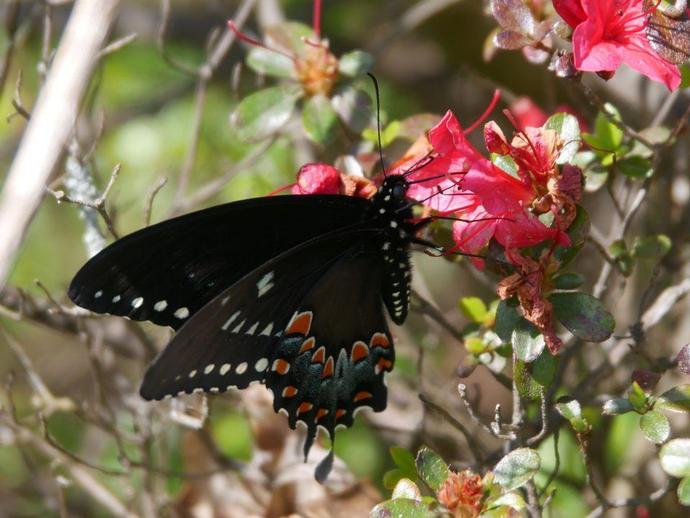January 2, 2021
We're reaching into the archives for today's #BenInNature update! The following post was originally published on May 5, 2020.
When I first saw this butterfly, I thought it was a black morph of the eastern tiger swallowtail (Papilio glaucus), as female tiger swallowtails can be either yellow or black. However, VMNH Associate Curator of Invertebrate Zoology Dr. Kal Ivanov informed me that it's actually a different species entirely: Papilio troilus, better known as the spicebush swallowtail!
The spicebush swallowtail is fairly common in the eastern U.S. and is primarily found in deciduous and swampy forests. The host plants for the caterpillars are either spicebush (Lindera benzoin) or white sassafras (Sassafras albidum). There is some evidence that they will eat the leaves of other trees within the family Lauraceae, but they're much pickier than eastern tiger swallowtails. In fact, scientists have conducted experiments where the caterpillars of spicebush swallowtails are presented with leaves from outside the Lauraceae family, and unlike most other swallowtail caterpillars, they won't even take a bite.
When female spicebush swallowtails are trying to decide where to lay their eggs, they will land on a leaf and drum their forelegs against it. The forelegs have little chemical receptors that can determine whether or not the leaf is a good host, and they'll only lay their eggs after a positive ID. For all the picky eaters of the world, the spicebush swallowtail could be a beautiful mascot!
ABOUT #BenInNature
Social distancing can be difficult, but it presents a great opportunity to become reacquainted with nature. In this series of posts, Administrator of Science Ben Williams ventures outdoors to record a snapshot of the unique sights that can be found in the natural world. New updates are posted Monday - Friday, with previous posts highlighted on the weekends.
NATURE PHOTO IDENTIFICATIONS
If you discover something in nature that you would like help identifying, be sure to message us right here on Facebook with a picture (please include location and date of picture) and we'll have our experts help you identify it!

 Hours & Admissions
Hours & Admissions Directions
Directions

